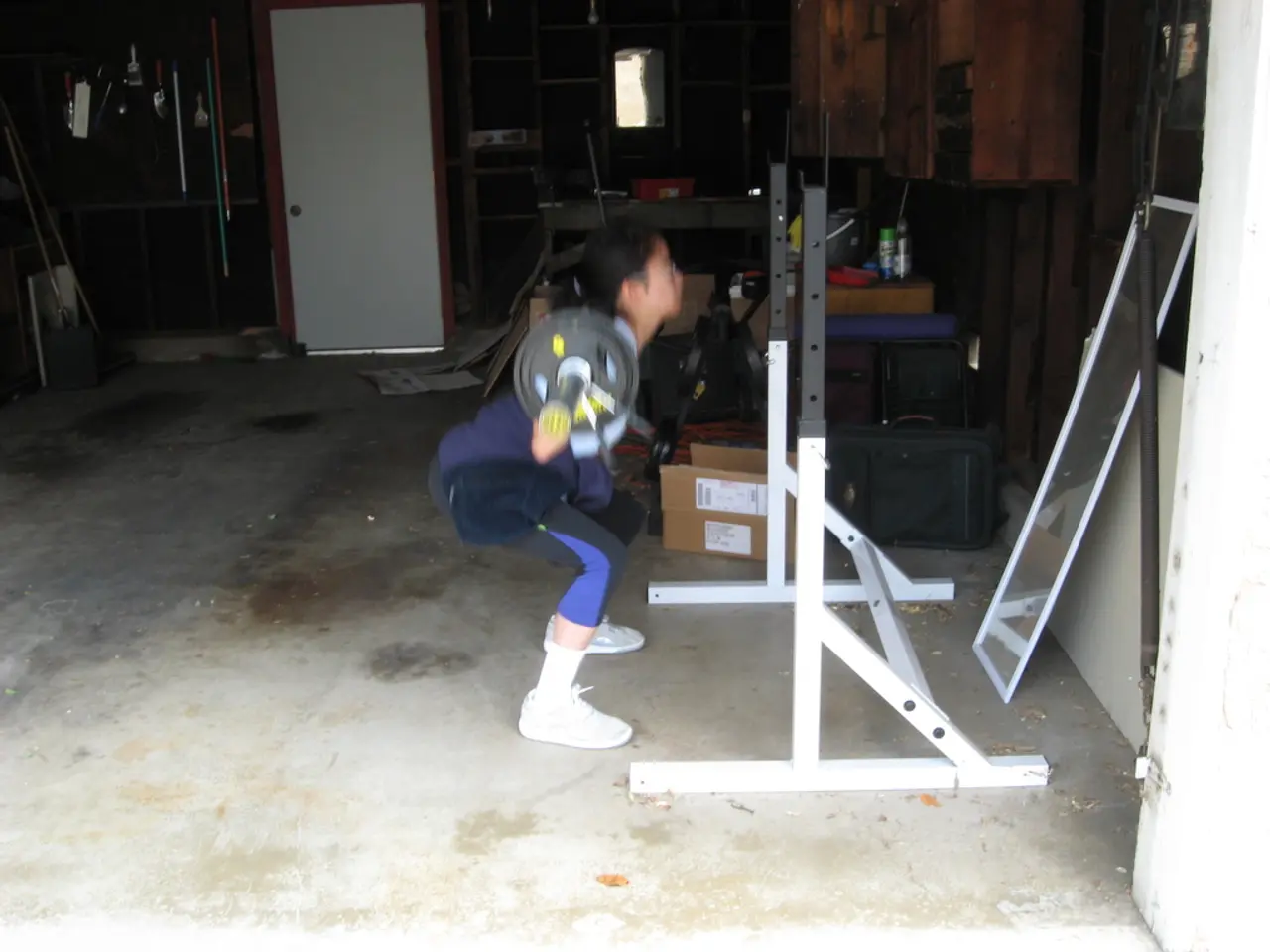Struggling with pull-ups? This specific exercise transformed my ability to perform them successfully
For many, the pull-up is a challenging and elusive exercise. However, with a structured and progressive strength program, it can be within reach. Here's a guide that focuses on back strengthening exercises, core work, hanging drills, band-assisted pull-ups, and the essential chin-over-bar hold.
Key Components of the Program
Back Strengthening Exercises
Incorporate compound pulling movements like barbell or Pendlay rows, seated cable rows, lat pull-downs, and bent-over dumbbell flyes. These target the latissimus dorsi, rhomboids, middle trapezius, and biceps muscles critical for pull-ups. Aim for multiple sets (e.g., 3-4 sets of 5-12 reps) at a challenging but manageable intensity (~RPE 7-8) to stimulate strength gains.
Core Work
Develop a strong core to maintain body stability and prevent swinging during pull-ups. Exercises emphasizing a strong hollow body position, engaging the abdominal and lower back muscles, are essential. Core engagement improves pull-up form and efficiency.
Hanging Work
Start with active hang holds from a pull-up bar, focusing on scapular engagement (shoulder blade squeeze) and grip strength. Progress by increasing hang duration to build endurance and shoulder stability, which prepares you for the pulling phase.
Band-Assisted Pull-Ups
Use resistance bands to assist the pull-up movement, reducing the load and allowing you to practice the full range of motion. Gradually decrease assistance as strength improves. Perform 2-3 sets of 5-8 repetitions, slowing down the negative (lowering) portion to build eccentric strength.
Chin-Over-Bar Hold
Holding your chin above the bar is crucial as it reinforces the top position strength required for a full pull-up. This also helps train neuromuscular control and confidence in the movement pattern. To perform a chin-over-bar hold, stand on a sturdy platform and take hold of the bar with hands just wider than shoulder-width apart, palms facing away.
A typical progression might look like this:
- Develop core strength and practice hollow holds.
- Practice active hangs with scapular engagement.
- Strengthen back muscles with rows and lat pull-downs.
- Incorporate band-assisted pull-ups emphasizing controlled ascents and slow, controlled descents.
- Work on chin-over-bar holds, gradually increasing hold time.
- Attempt unassisted pull-ups as strength and technique improve.
Maintaining strict form with core tension, avoiding momentum, and consistent progressive overload (increasing reps, sets, or decreasing band assistance) are key to success.
Myth-Busting
It is a misconception that arm strength is necessary for a pull-up; a strong core, upper back, and lat muscles are more important. Lowering with control is necessary to finish a chin-over-bar hold rep.
In everyday life, pull-ups can lead to better posture, a stronger physique, and a self-esteem boost. More experienced individuals can hold the position for a set time and aim for three sets of three reps, increasing time in the hold, reps and sets, or reducing resting time as they get stronger.
The speaker, a level 3 personal trainer, continued to practice chin-over-bar holds to build strength for subsequent pull-ups. Pull-ups recruit multiple muscle groups, including those responsible for pulling power, grip strength, and core stability.
[1] Schoenfeld, B. J., Grgic, J., Ogborn, D., & Krieger, J. W. (2016). Differences in muscle activation between narrow, medium, and wide grip pull-ups. Journal of Strength and Conditioning Research, 30(11), 3352–3357.
[2] Schoenfeld, B. J., Contreras, B., & Peterson, M. D. (2016). The mechanics of resistance training: evidence-based recommendations for novel training variables. Journal of Strength and Conditioning Research, 30(10), 2971–2985.
[3] Schoenfeld, B. J., Grgic, J., Ogborn, D., & Krieger, J. W. (2017). Comparison of grip widths during pull-ups: implications for muscular activation and joint range of motion. Journal of Human Kinetics, 62, 135–141.
[4] Schoenfeld, B. J., Contreras, B., & Peterson, M. D. (2018). The role of exercise type in muscular adaptations of low- versus high-load resistance training. Sports Medicine, 48(11), 1519–1537.
[5] Schoenfeld, B. J., Grgic, J., Ogborn, D., & Krieger, J. W. (2019). The effects of band-assisted pull-ups on muscle activation and joint range of motion compared to bodyweight and weighted pull-ups. Journal of Strength and Conditioning Research, 33(11), 3006–3014.
- Engaging in regular fitness-and-exercise routines that include workouts focusing on health-and-wellness, such as the structured strength program outlined for performing pull-ups, can contribute to overall physique enhancement and better posture.
- The scientific literature on strength training, as referenced by the aforementioned studies [1-5], suggests that while arm strength is often attributed to pull-ups, a strong core, upper back, and lat muscles are actually more important for successful execution.




